Cretaceous Period dinosaurs list with pictures and facts. On this page you’ll find a list of some of the best-known dinosaurs of the Cretaceous Period, together with pictures and facts on each dinosaur.
In addition to famous dinosaurs such as Tyrannosaurus and Iguanodon, this list contains many less familiar species, including sauropods with huge spikes on their backs, tank-like plant-eaters armed with tail clubs, and winged gliding dinosaurs…
Related Pages
- You can find out more about the Cretaceous Period here: Cretaceous Period Facts
- Find out about the different types of dinosaur (including theropods, saurischians, etc.) here: Types of Dinosaur
- Commonly-asked Jurassic questions answered: When Was The Cretaceous Period?
Discover More Dinosaurs!
Cretaceous Dinosaurs: Introduction
Skip the introduction - take me to the list!
The Cretaceous Period was the third and final period of the Mesozoic Era. It lasted 79 million years, making it the longest period of the Mesozoic Era.
During the Cretaceous Period Earth became ever more recognizable, with the continents gradually moving towards their present-day positions. Flowering plants appeared, changing the face of the planet and allowing the rapid appearance of many new types of insect.
It was during the Cretaceous Period that dinosaurs were at their most diverse.
The largest land animals ever to walk the Earth – the titanosaurs – existed during this time. Herds of ‘duck-billed’ hadrosaurids became the dominant plant-eaters, displacing the huge sauropods in many parts of the world. The carcharodontosaurids – the largest land predators ever to have lived – were also present, snapping up unwary prey with their powerful jaws.
Tyrannosaurus Rex – perhaps the most famous (and fearsome) predator of all time – lived at the very end of the Cretaceous Period.
Dinosaurs were perhaps the most successful large land animals ever to have existed. But they were not immortal.
Unbeknown to the tyrannosaurs, hadrosaurids, and their relatives, the Cretaceous Period was to be the peak of their existence. Far out in space, a large asteroid was on a silent collision course with Earth.
When it finally struck the planet, around 66 million years ago, it triggered a mass extinction event that spelled the end for the dinosaurs… all those that hadn’t evolved into birds, that is.
Let’s meet some of the amazing dinosaurs that lived during the Cretaceous Period…
Cretaceous Period Dinosaurs
A list of famous (and not so famous) dinosaurs of the Cretaceous Period. Have you got a favorite? Have we missed any out? Let us know in the comments at the bottom of the page!
Abelisaurus
- Type of Dinosaur: Theropod
- Existed: Late Cretaceous, 80 Million years ago (Mya)
- Where found: South America
- Estimated length:5 m (21 ft.)
Abelisaurus was a large, bipedal predatory dinosaur that lived in South America during the Late Cretaceous. It is thought to have hunted the huge titanosaurs that also inhabited South America during this time.
All that we know about Abelisaurus comes from a single skull fossil. The specimen was found in the Anacleto Formation – a Late Cretaceous rock formation located in Argentina.
- You can find out more about Abelisaurus on this page: Abelisaurus Facts
Albertosaurus
- Type of Dinosaur: Theropod
- Existed: Late Cretaceous, 71-68 Mya
- Where found: Alberta, Canada
- Estimated length: 8-10 m (26-33 ft.)
Albertosaurus was a member of the dinosaur family Tyrannosauridae (the same family to which T. rex and Gorgosaurus belong). The first Albertosaurus specimen to be found was a partial skull. It was discovered in 1884 on an expedition led by Canadian geologist Joseph Burr Tyrrell.
Several other specimens have since been found, and three Albertosaurus species have so far been identified.
- You can find out more about Albertosaurus on this page: Albertosaurus Facts
Amargasaurus
- Type of Dinosaur: Sauropod
- Existed: Early Cretaceous, 129.4-122.46 Mya
- Where found: Argentina
- Estimated length: 12 m (39 ft.)
Although Amargosaurus had the typical build of a sauropod (i.e. large body, long tail and four pillar-like legs) it had a number of features that differentiated it from other dinosaurs of this type. Its neck was relatively short, and projecting upwards from the neck and back were two rows of tall spines.
Along the back of the neck – where the spines were at their tallest – they were up to 60 cm (24in.) in length. They may have been used as defense against predators, as a weapon, or to support a crest, which itself may have been used either for display or heat regulation.
Ankylosaurus
- Type of Dinosaur: Ankylosaurid, Ornithischian
- Existed: Late Cretaceous, 68-66 Mya
- Where found: North America
- Estimated length: 10 m (33 ft.)
The first Ankylosaurus specimen was found in 1906 at the well-known Hell Creek Formation in Montana. The rocks at this location were formed during the Late Cretaceous. The expedition was led by US paleontologist Barnum Brown, who named the Ankylosaurus in 1908.
Ankylosaurus is the biggest-known Ankylosaurid. It lived right up to the extinction event that killed off the non-avian dinosaurs.
The plant-eating Ankylosaurus was built like a tank, with rows of armored plates running along its body and horns on its head. Its estimated weight was between 5 and 8 tonnes. The dinosaurs was armed with a heavy club at the end of its powerful tail.
Any predator thinking about taking on an Ankylosaurus would soon learn that it wouldn’t be an easy meal!
- You can find out more about Ankylosaurus on this page: Ankylosaurus Facts
Argentinosaurus
- Type of Dinosaur: Titanosaur, Sauropod
- Existed: Late Cretaceous, 97-93.5 Mya
- Where found: South America
- Estimated length: 30-39.7 m (98-130 ft.)
Argentinosaurus was a titanosaur that lived in South America in the Late Cretaceous. It grew to almost 40 m (131 ft.) in length and 7.3 m (24 ft.) in shoulder height. Its weight has been estimated as being between 60 and 88 tonnes.
Argentinosaurus was possibly not only the largest dinosaur, but also the largest land animal, that has ever lived.
Baryonyx
- Type of Dinosaur: Spinosaurud, Theropod
- Existed: Early Cretaceous
- Where found: England
- Estimated length: 10 m (33 ft.)
Baryonyx was discovered in a clay pit in England by William Walker in 1983. It is the most complete spinosaurid specimen yet found. Contained within its stomach were fish scales and the remains of an Iguanodon.
Baryonyx had the typical long, crocodile-like jaws and straight, pointed teeth of a spinosaurid. It probably had a semi-aquatic lifestyle, feeding predominantly on fish.
- You can find out more about this dinosaur here: Baryonyx Facts
Carcharodontosaurus
- Type of Dinosaur: Theropod
- Existed: Late Cretaceous
- Where found: North Africa
- Estimated length: 14 m (46 ft.)
Carcharodontosaurus, whose name means ‘Great White Shark Lizard’, was one of the largest meat-eating dinosaurs ever to have lived. Its skull is longer than that of any Tyrannosaurus.
The first Carcharodontosaurus specimens were destroyed during the Second World War, but other specimens have since been found.
Carnotaurus
- Type of Dinosaur: Abelisaurid, Theropod
- Existed: Late Cretaceous, 72-69.9 Mya
- Where found: Argentina
- Estimated length:5-9 m (24.6-29.5 ft.)
Carnotaurus was a bipedal meat-eater. The structure of this Cretaceous Period dinosaur's skeleton suggests that is was a fast runner. Its forelimbs were even shorter than those of Tyrannosaurus; scientists believe that they may have been vestigial (i.e. that they had no function, and were ‘left over’ from the animal’s ancestors).
Carnotaurus is the only known carnivorous dinosaur with horns. These weapons may have been used to fight rival males for territory or dominance.
- You can find out more about Carnotaurus on this page: Carnotaurus Facts
Deinonychus
- Type of Dinosaur: Dromaeosaurid, Theropod
- Existed: Early Cretaceous, 115-108 Mya
- Where found: USA
- Estimated length: 4 m (13 ft.)
The "Velociraptors" in the film Jurassic Park were actually based on Deinonychus rather than the real-life Velociraptor. The name was changed because it was thought that the name "velociraptor" sounded more dramatic.
Like the "Velociraptors" in the film, Deinonychus was a mid-sized predatory dinosaur. Fossil remains suggest that Deinonychus was a pack hunter; their skeletons have been found together, and larger animals (too large for a single Deinonychus to bring down) have been found with possible Deinonychus teeth marks.
Edmontosaurus
- Type of Dinosaur: Hadrosaurid, Ornithischian
- Existed: Late Cretaceous, 73-66 Mya
- Where found: USA, Canada
- Estimated length: 13 m (43 ft.)
Edmontosaurus was one of the largest hadrosaurids. It had the typical ‘duck billed’ appearance of dinosaurs of this type. It had a toothless beak, and its mouth contained flat teeth which were continually replaced during the animal’s lifetime.
Edmontosaurus was a plant eater that was able to walk using four legs, and, if speed was required, using its hind legs alone. It lived in herds, and may have been migratory.
Gallimimus
- Type of Dinosaur: Ornithomomid, Theropod
- Existed: Late Cretaceous, 70 Ma
- Where found: Mongolia
- Estimated length: 6 m (19.5 ft.)
Gallimimus is a member of Ornithomimosauria, a group also known as the ‘ostrich dinosaurs’. The group is so-named due to similarities between them and the modern day ostrich.
These similarities include long necks, and long, powerful legs. Like ostriches today, they were built for speed, and were possibly among the fastest dinosaurs.
Gallimimus is the largest ostrich dinosaur. It had a toothless beak, and probably had feathers. It lived in what is now Mongolia, Asia.
Gallimimus featured in the film Jurassic Park.
- You can find out more about Gallimimus on this page: Gallimimus Facts
Giganotosaurus
- Type of Dinosaur: Carcharodontosaurid, Theropod
- Existed: Late Cretaceous, 98-97 Mya
- Where found: Argentina
- Estimated length: 12-15 m (39-49.5 ft.)
Giganotosaurus vies with Spinosaurus for the title ‘biggest ever land predator’. It was a huge, fast-moving meat-eater with a skull even larger than that of Tyrannosaurus. Its bite force, however, is estimated not to have been as powerful as that of its North American cousin.
Giganotosaurus roamed the South American landscape, preying on titanosaurs and other sauropods that were alive at the time.
- You can find out more about Giganotosaurus on this page: Giganotosaurus Facts
Gorgosaurus
- Type of Dinosaur: Tyrannosaurid, Theropod
- Existed: Late Cretaceous, 76.6-75.1 Mya
- Where found: North America
- Estimated length: 9 m (30 ft.)
Gorgosaurus was a large bipedal predatory dinosaur. It belonged to the same family, Tyrannosauridae, as its more famous cousin, T. rex, which appeared later on in the Cretaceous Period. Although not as large as T. rex, Gorgosaurus was an apex predator.
Gorgosaurus was discovered and named by Canadian paleontologist Lawrence Lambe. It is closely related to another Tyrannosaurid, Albertosaurus, and for a while the two were considered to be the same dinosaur.
- You can find out more about Gorgosaurus on this page: Gorgosaurus Facts
Hypsilophodon
- Type of Dinosaur: Ornithopod (possible), Ornithischian
- Existed: Early Cretaceous, 130-125 Mya
- Where found: England, Spain
- Estimated length:5-1.8 m (5-6 ft.)
Hypsilophodon was discovered in 1849 on the Isle of Wight, an island off the south coast of England. Although first thought to be a tree-climbing, kangaroo-like animal, it is now thought to be a fast-moving ground animal.
Hypsilophodon had long legs and was built for speed, with a lightweight skeleton and stiff tail. It had a beak and teeth, and possibly ate meat as well as plant matter.
Iguanodon
- Type of Dinosaur: Ornithopod, Ornithischian
- Existed: Early Cretaceous, 126-113 Mya
- Where found: England, Spain, Belgium
- Estimated length: 10 m (33 ft.)
Iguanodon was the second dinosaur ever to be named, and one of three dinosaurs used by English paleontologist Richard Owen to introduce dinosaurs to the scientific world.
The first Iguanodon fossils were teeth. They were found by paleontologist Gideon Mantell. He identified them as being reptile in origin, and later named the species Iguanodon.
Iguanodon itself was a large plant eater. On each forefoot was large a thumb-spike, three hoof-like fingers and a longer fifth finger, which was flexible and capable of gripping.
- You can find out more about Iguanodon on this page: Iguanodon Facts
Lambeosaurus
- Type of Dinosaur: Hadrosaurid, Ornithischian
- Existed: Late Cretaceous, 76-75 Mya
- Where found: North America
- Estimated length: 9-15 m (30-49 ft.)
Lambeosaurus is named after paleontologist Lawrence Lambe. Lambe found the first Lambeosaurus specimens, but it wasn’t until after his death that the specimens were combined with others and the dinosaur named in his honor.
Lambeosaurus had a distinctive, axe-shaped crest on its head, with the ‘blade’ projecting upwards and the horn-shaped ‘handle’ projecting backwards. The crest was connected to the dinosaur’s nasal passages, and may have been used to create or amplify sounds, or in display.
Microraptor
- Type of Dinosaur: Dromaeosaurid, Theropod
- Existed: Early Cretaceous, 120 Mya
- Where found: China
- Estimated length:6-0.77 m (24-30in.)
Microraptor was a small, bird-like dinosaur. It was abundant in Asia in the Early Cretaceous, and over 300 specimens have been found.
Microraptor had four wings and a feathered tail. It was certainly capable of gliding, and recent studies suggest that it may also have been capable of bird-like flapping flight.
Minmi
- Type of Dinosaur: Ankylosaurian, Ornithischian
- Existed: Early Cretaceous
- Where found: Australia
- Estimated length: 3 m (9.8 ft.)
Minmi is an early ankylosaurian that lived in the Early Cretaceous in Australia. Minmi is the shortest of all dinosaur names. It refers to Minmi Crossing, the area of Queensland in which the dinosaur was found.
Minmi had comparatively longer legs than other Ankylosaurids, and these and other physical adaptations suggest that is may have been a relatively fast runner. Its hips were adorned with spines, probably for defensive purposes.
Oviraptor
- Type of Dinosaur: Oviraptorid, Theropod
- Existed: Late Cretaceous
- Where found: Mongolia
- Estimated length: 1.8 m (6 ft.)
The first Oviraptor fossil to be discovered was found near a pile of fossilized eggs. It was thought that the dinosaur was in the process of eating the eggs, and the genus was given the scientific name ‘Oviraptor’, which means ‘egg thief’.
The name has proved misleading as it is now thought that the eggs belonged to the dinosaur itself. Rather than being an egg thief, the dinosaur may have died protecting its own eggs!
Oviraptor was one of the most bird-like of all dinosaurs. It had a beak and lacked teeth. It probably also had feathers.
Parasaurolophus
- Type of Dinosaur: Hadrosaurid, Ornithischian
- Existed: Late Cretaceous, 76.5-73 Mya
- Where found: North America
- Estimated length: 10 m (33 ft.)
Parasaurolophus was a hadrosaurid in the family Hadrosauridae. This group of Cretaceous dinosaurs is otherwise known as the ‘duck-billed dinosaurs’ on behalf of their flat, bill like snouts.
Parasaurolophus’ most distinctive feature was a long, curved crest projecting from the back of its head. Tubes inside the crest ran from the nostrils to the tip of the crest, then back towards the head.
It is thought that Parasaurolophus may have used the crest to produce or amplify its calls. Alternatively, the crest may have played a part in controlling the animal’s body temperature.
- You can find out more about this dinosaur here: Parasaurolophus Facts
Protoceratops
- Type of Dinosaur: Ceratopsid, Ornithischian
- Existed: Late Cretaceous, 75-71 Mya
- Where found: Mongolia, China
- Estimated length:7 m (9 ft.)
Protoceratops was a relatively small, slow-moving, plant-eating dinosaur of the Late Cretaceous. It was abundant in Asia, where it probably lived in herds.
Despite being a member of Ceratopsia (a dinosaur group whose name means ‘horned faces’), Protoceratops lacked horns, although it did have a large armored frill protecting its neck – a feature common to many members of the group.
Spinosaurus
- Type of Dinosaur: Spinosaurid, Theropod
- Existed: Albian Age, Early Cretaceous to Turonian Age, Late Cretaceous, 112-93.5 Mya
- Where found: North Africa
- Estimated length: 13-17 m (42.5-56 ft.)
Spinosaurus was a similar size to, if not slightly larger than, Tyrannosaurus, making it one of the largest predatory land animals that has ever lived. Spinosaurus was adapted to a semi-aquatic lifestyle, and had a long, crocodile-like snout for catching fish. It also took land-based prey.
The distinctive sail-like fin of Spinosaurus was supported by rows of bony spines. It may have been used to control the dinosaur’s body temperature, or as a means of display.
- You can find out more about this dinosaur here: Spinosaurus Facts
Stegoceras
- Type of Dinosaur: Pachycephalosaurid, Ornithischian
- Existed: Late Cretaceous, 77.5-74 Mya
- Where found: North America
- Estimated length: 2 m (6.5 ft.)
Stegoceras was a member of the family Pachycephalosauridae, a group also known as the ‘bone-headed’ dinosaurs on account of their reinforced skulls.
The top of Stegoceras’ skull was thick and domed, and its neck and back were well-developed; the Stegoceras was built like a mini battering ram. The species may have established dominance in its group using head butting rituals – similar to those used by modern goats.
Suchomimus
- Type of Dinosaur: Spinosaurud, Theropod
- Existed: Aptian Age, Early Cretaceous
- Where found: Niger, Africa
- Estimated length: 11 m (36 ft.)
Suchomimus was a spinosaurid dinosaur that lived in Africa in the Early Cretaceous. Its scientific name means ‘crocodile mimic’ on behalf of the dinosaur’s crocodile-like head.
Suchomimus had a semi-aquatic lifestyle, with a diet consisting mainly of fish.
Running along its back was a low sail, supported by bony spines. This may have been used to control the dinosaur’s temperature, or as a display to attract mates.
Tarbosaurus
- Type of Dinosaur: Tyrannosaurid, Theropod
- Existed: Late Cretaceous, 70 Mya
- Where found: China, Mongolia
- Estimated length: 14 m (46 ft.)
Tarbosaurus is closely related to Tyrannosaurus; some paleontologists consider it to be a Tyrannosaurus itself.
Tarbosaurus was slightly smaller than its North American cousin, and its arms were proportionally even smaller than those of Tyrannosaurus.
This fearsome Asian theropod would have been an apex predator, preying on the local hadrosaurs and sauropods.
Triceratops
- Type of Dinosaur: Ceratopsid, Ornithischian
- Existed: Late Cretaceous, 68-66 Mya
- Where found: North America
- Estimated length: 9 m (30 ft.)
Triceratops was a distinctive dinosaur, having two large horns on top of its head and a third horn above its snout (its scientific name means ‘three-horned face’). Covering triceratops’ neck was a large bony shield, or ‘frill’.
Theories as to what the horns and frill were used for include: providing protection against predators; a means of signaling the animal’s health and condition to potential mates; fighting other Triceratops to establish dominance; or perhaps a mixture of all three.
Many Triceratops specimens have been discovered, suggesting that it was one of the dominant plant-eaters of the time. 40% of all fossils found in western USA’s Hell Creek Formation are Triceratops, making it the most abundant dinosaur in the area.
- You can find out more about this dinosaur here: Triceratops Facts
Troodon
- Type of Dinosaur: Troodont, Theropod
- Existed: Campanian Age, Late Cretaceous
- Where found: North America
- Estimated length: 2 m (6.5 ft.)
Troodon’s scientific name means ‘tearing / wounding tooth’. It refers to Troodon’s distinctive serrated teeth. The genus was named after a single tooth, found in Montana’s Judith River Formation.
Troodon had large, forward-facing eyes, a large brain, and a curved, velociraptor-style killing claw on each foot. Scientists believe that its large eyes may have been an adaptation for hunting at dawn and at dusk.
- You can find out more about Troodon on this page: Troodon Facts
Tyrannosaurus
- Type of Dinosaur: Tyrannosaurid, Theropod
- Existed: Late Cretaceous, 68-66 Mya
- Where found: Western USA
- Estimated length: 12 m (39 ft.)
Tyrannosaurus is one of the best-known of all dinosaurs. Tyrannosaurus Rex is one of the few dinosaur species that most people can name (most dinosaurs are known by genus (e.g. Tyrannosaurus), rather than by species (e.g. Tyrannosaurus Rex)).
Tyrannosaurus was a large bipedal predator with a huge head and powerful jaws. It had what is estimated to be the greatest bite force of all land animals.
With teeth up to 30.5 cm (12 in) in length (including root), it would have been a formidable predator, capable of taking down large, well-armored prey.
- You can find out more about this dinosaur here: Tyrannosaurus Facts
- You can find out more about the species T. rex on this page: T. Rex Facts
Utahraptor
- Type of Dinosaur: Dromaeosaurid, Theropod
- Existed: Early Cretaceous, 126 Ma
- Where found: Western USA
- Estimated length: 6 m (19.5 ft.)
Utahraptor is a Dromaeosaurid; a member of the family Dromaeosauridae, which also includes Cretaceous Period dinosaurs such as Velociraptor and Deinonychus. Members of this family are known as ‘raptors’.
Utahraptor is one of the largest-known Dromaeosaurids, and would have stood taller than a man. Its sickle-shaped killing claw was around 35 cm (14 in. long). Utahraptor was one of the earliest Dromaeosaurids.
Velociraptor
- Type of Dinosaur: Dromaeosaurid, Theropod
- Existed: Late Cretaceous, 75-71 Mya
- Where found: Mongolia, China
- Estimated length: 07 m (6.8 ft.)
Fans of the Jurassic Park films may be surprised to learn that Velociraptor, rather than being taller than a man, was actually turkey-sized. (The velociraptors in Jurassic Park were in fact based on Deinonychus; they were named ‘velociraptors’ because the writers thought that it sounded better.)
The real velociraptor was around 0.5 m (1.6 ft.) tall. It walked on its hind legs, and had feathers. Like other Dromaeosaurids, it possessed a large sickle-shaped claw on each of its feet with which it dispatched its prey.
- You can find out more about this dinosaur here: Velociraptor Facts
Cretaceous Period Dinosaurs List: Conclusion
We hope that you have enjoyed finding out about some of the amazing dinosaurs that lived in the Cretaceous Period.
You can discover more about dinosaurs and the Mesozoic Era on the following pages:
- Find out more about the Triassic Period: Triassic Period Facts
- See Triassic Period dinosaurs: Triassic Dinosaurs
- Find out more about the Jurassic Period: Jurassic Period Facts
- See Jurassic Dinosaurs: Jurassic Dinosaurs
- Find out more about the Cretaceous Period: Cretaceous Period Facts
- Become a dinosaur expert: Dinosaur Facts

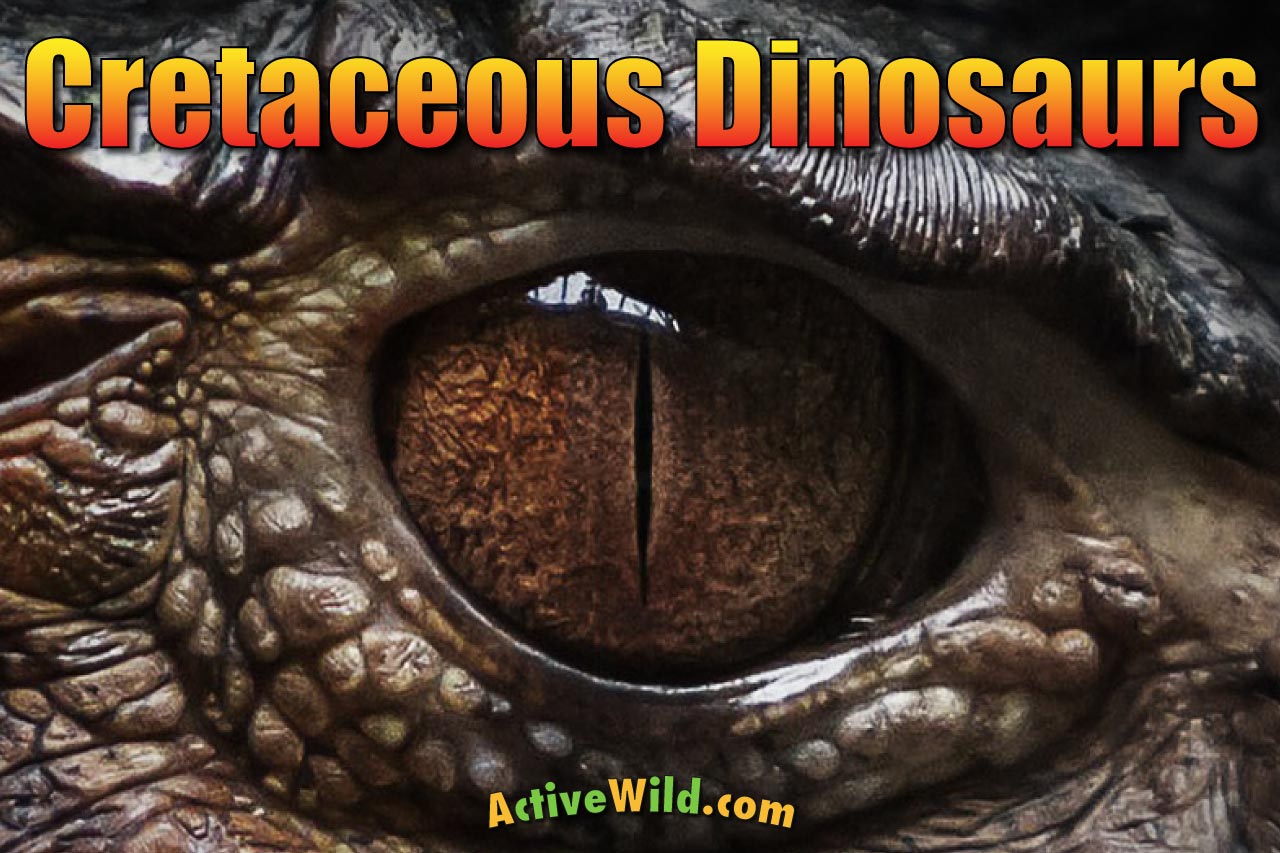

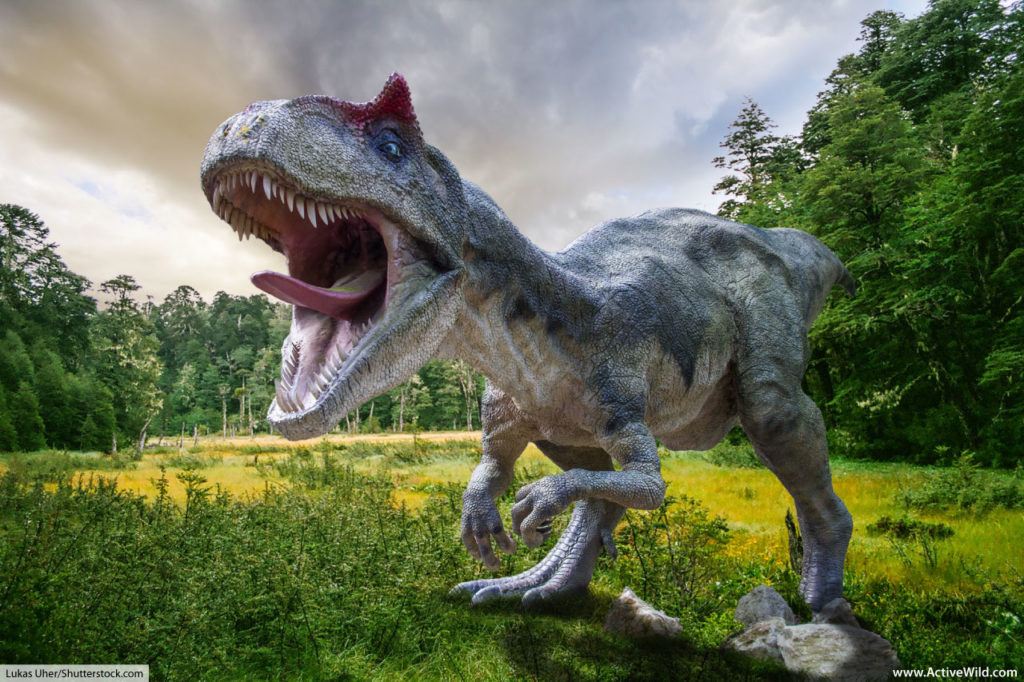
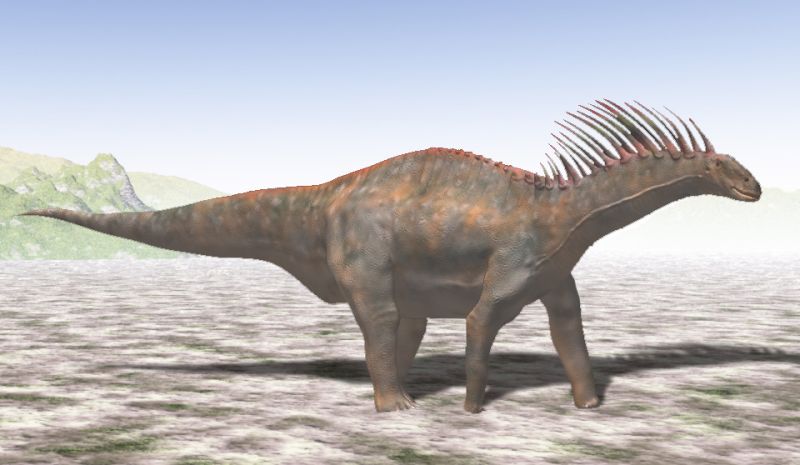
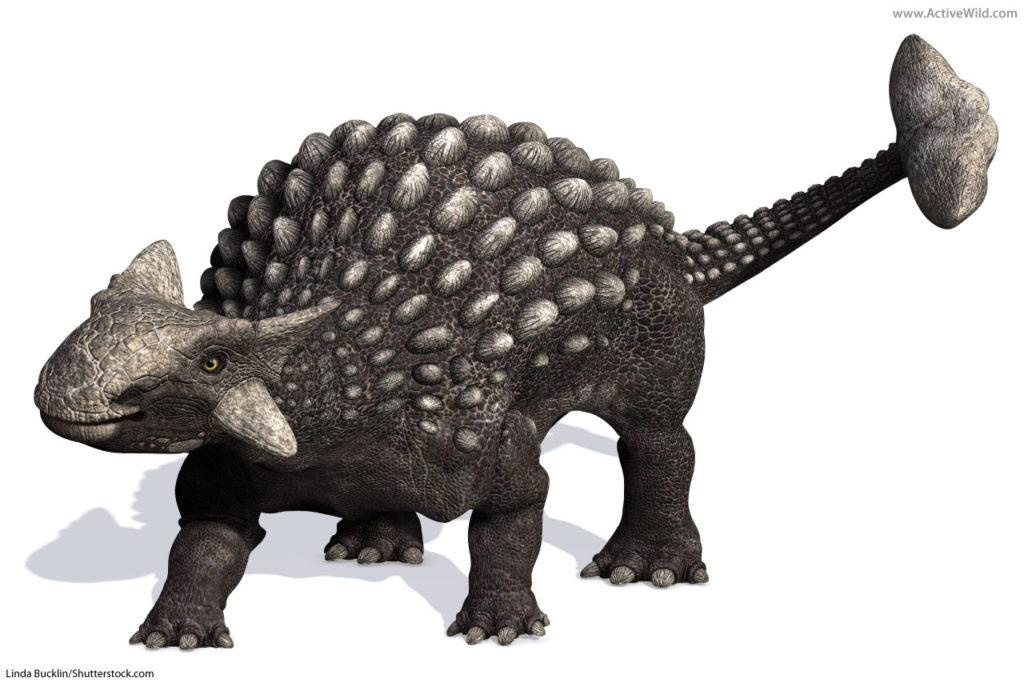
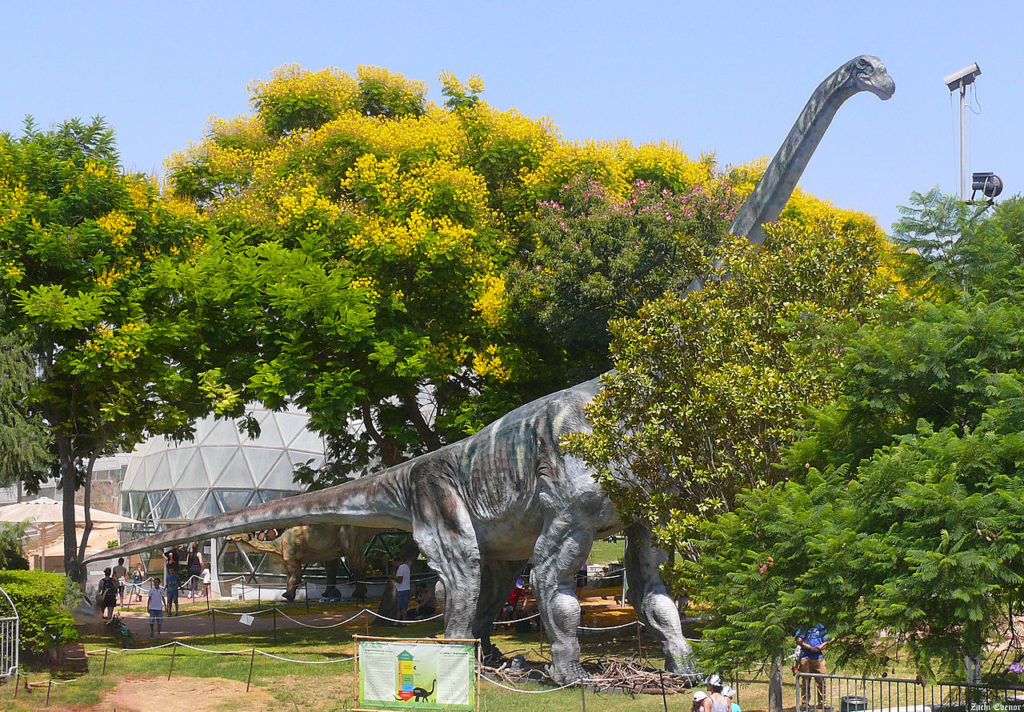

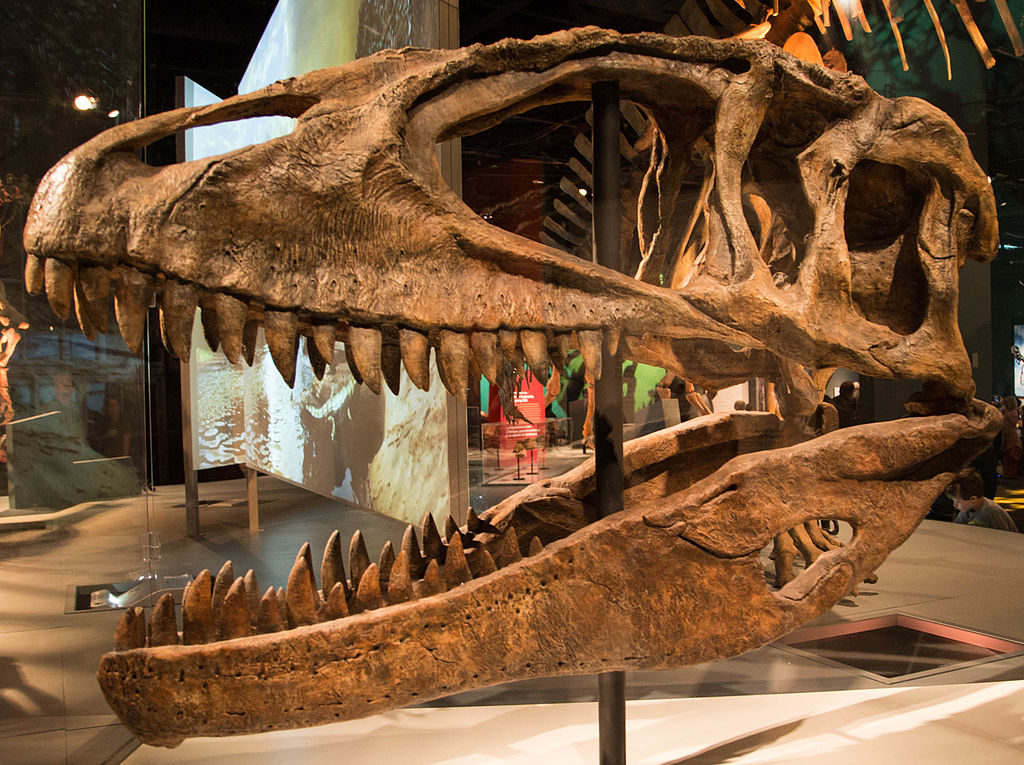
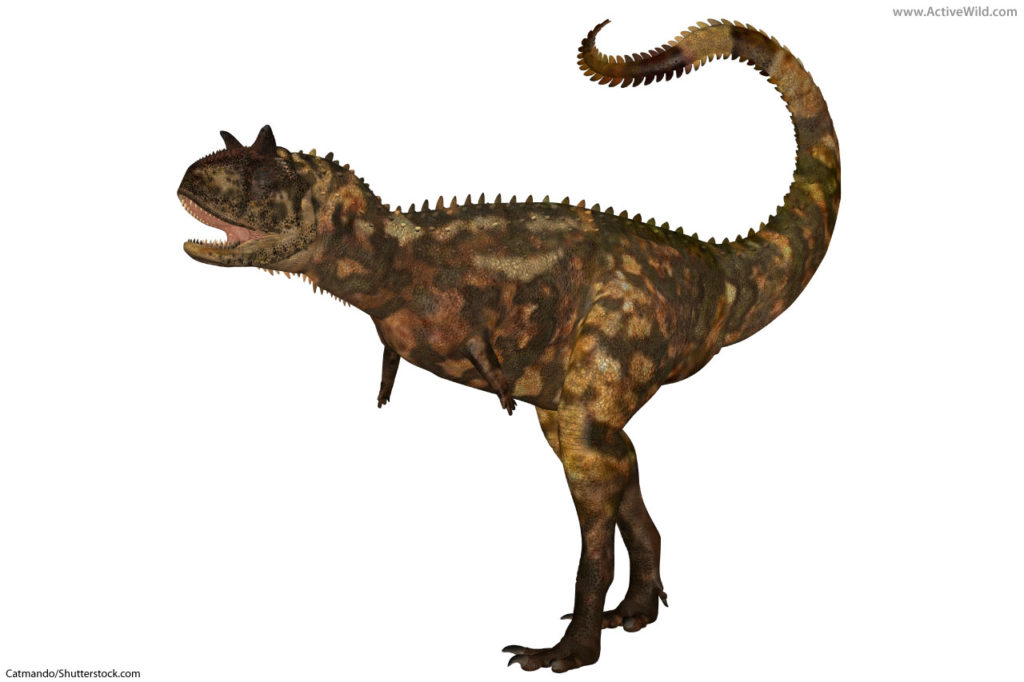
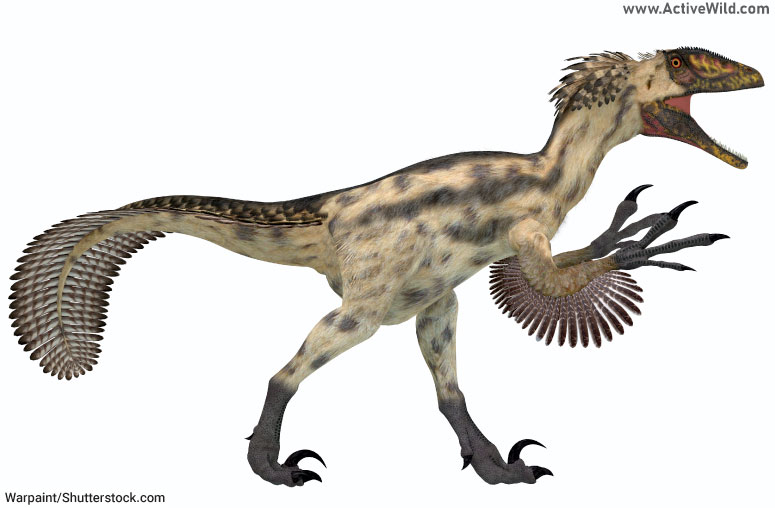



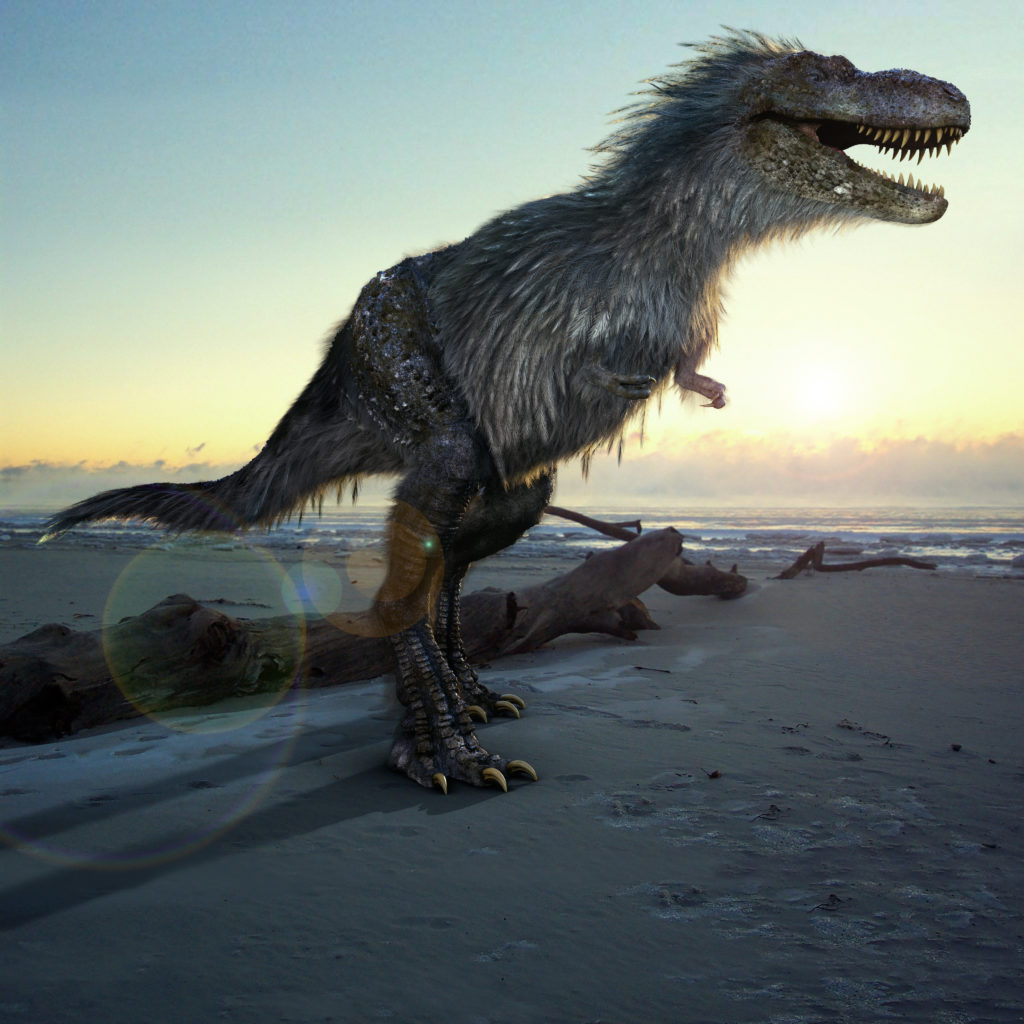
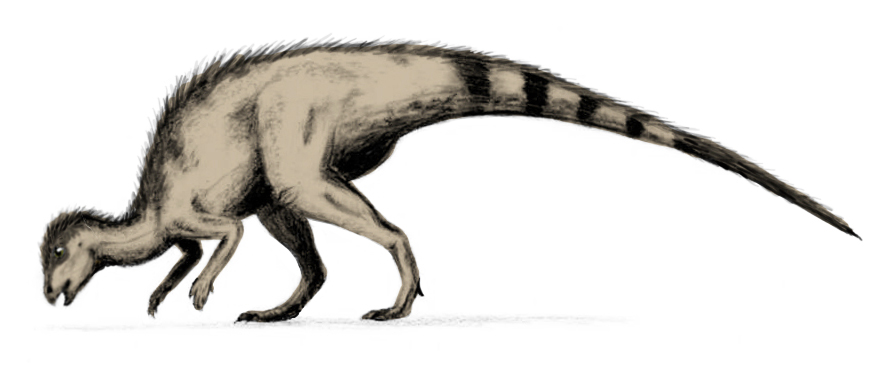




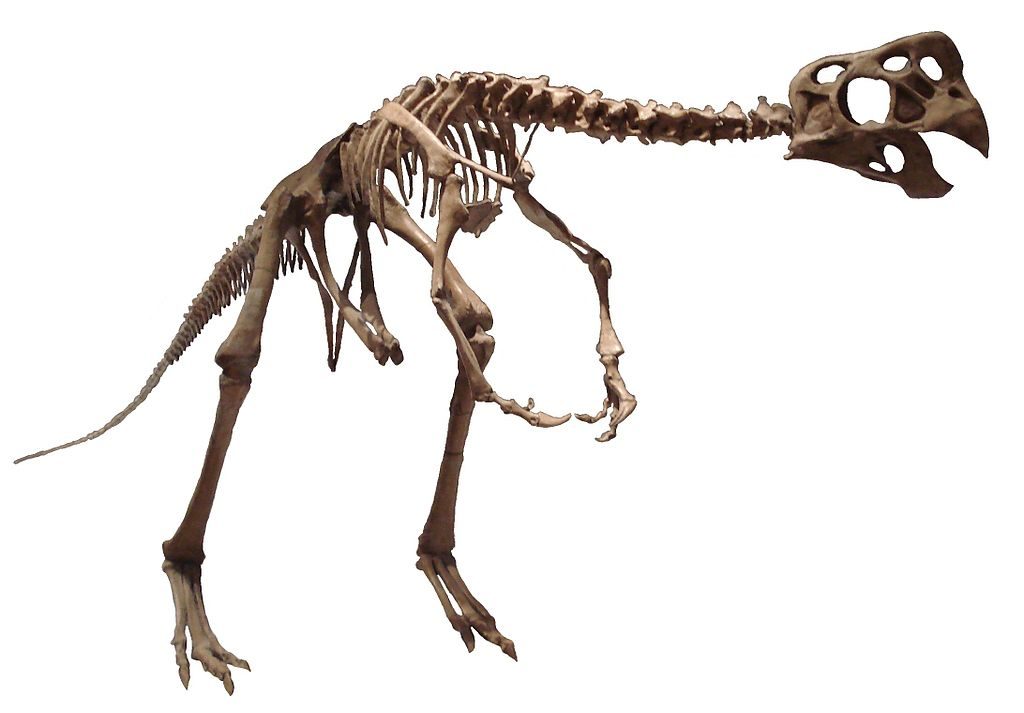
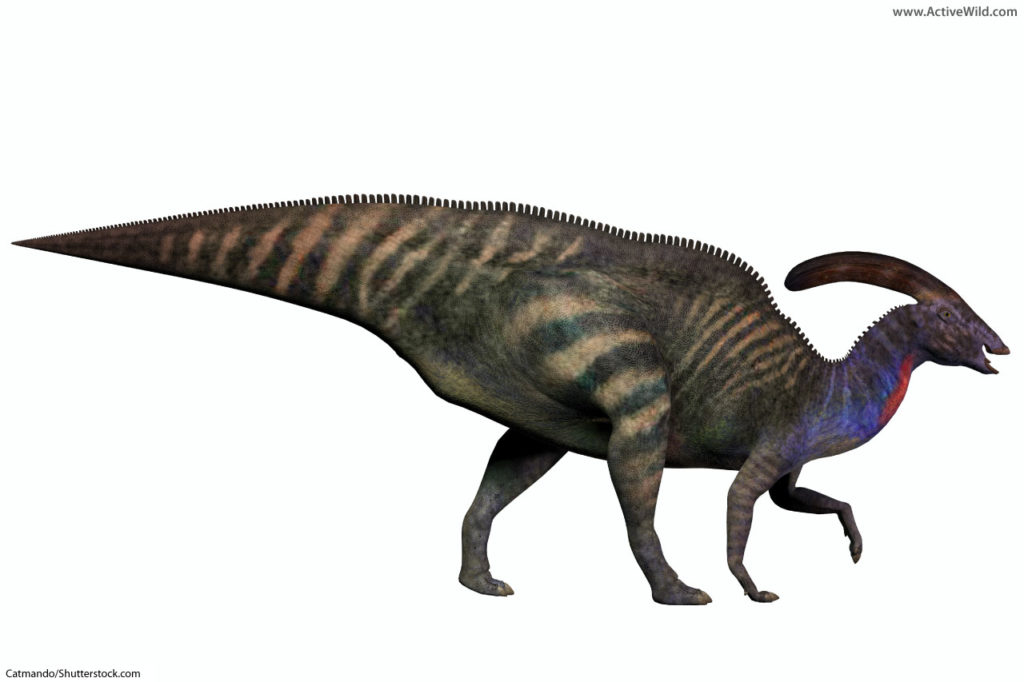

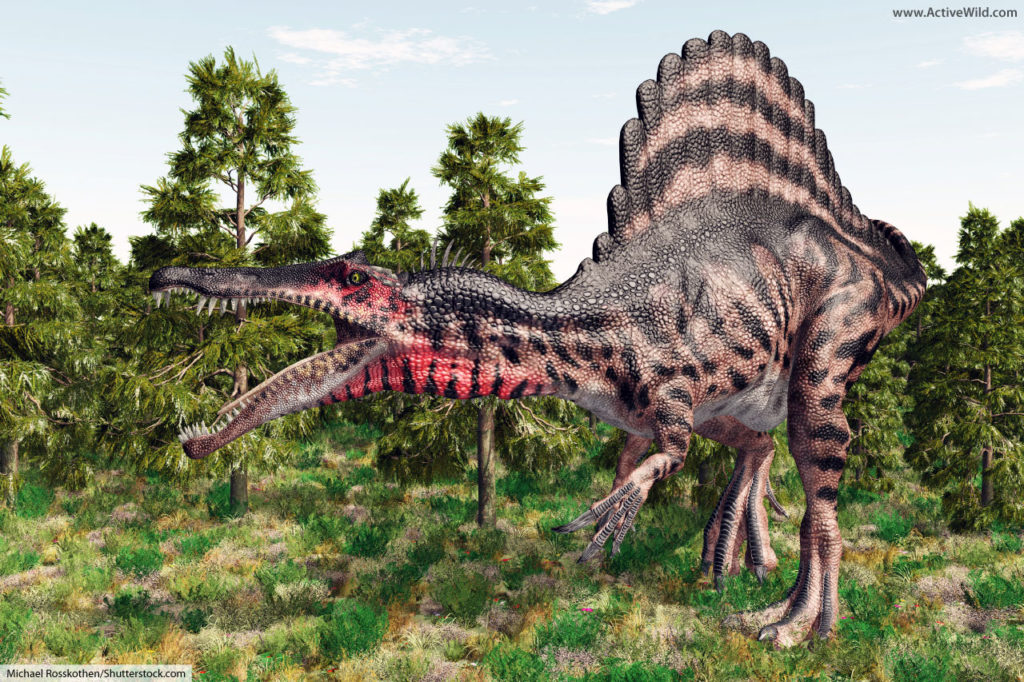
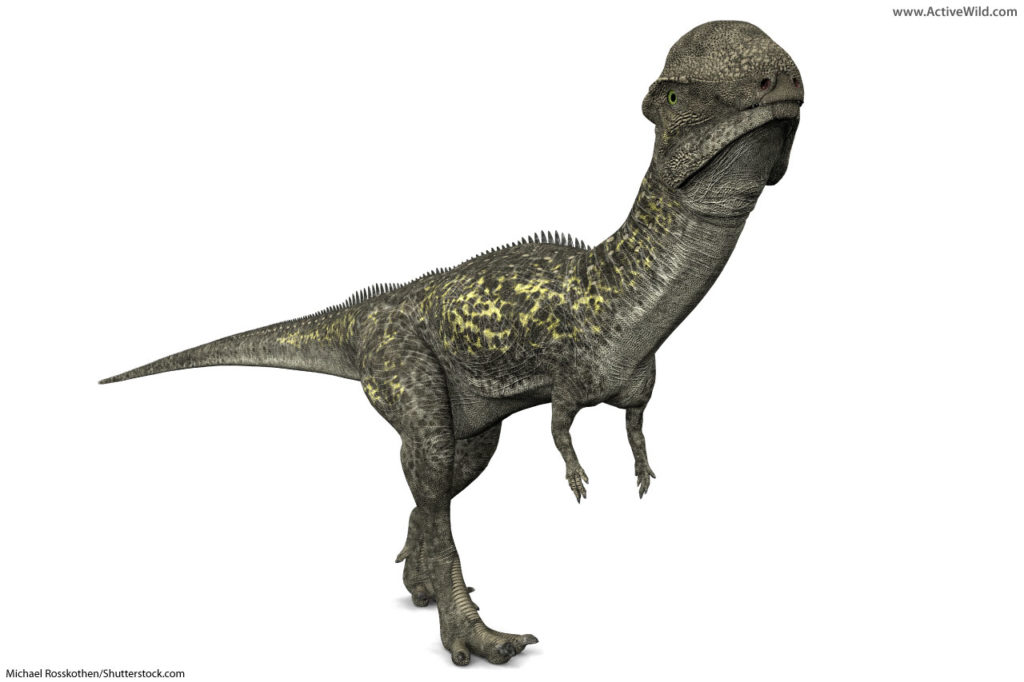


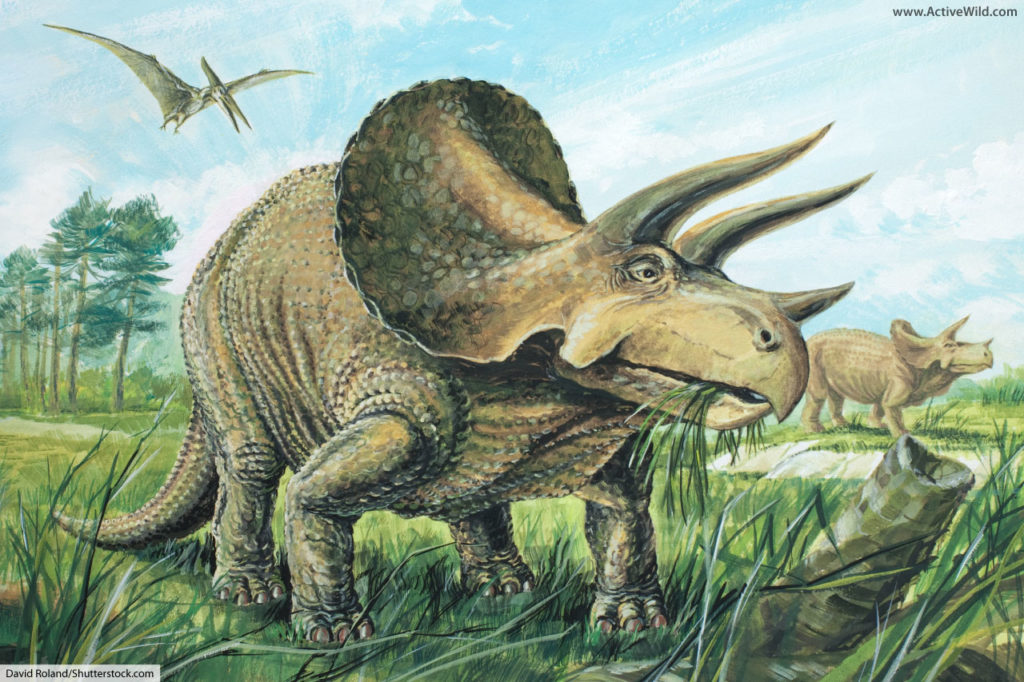
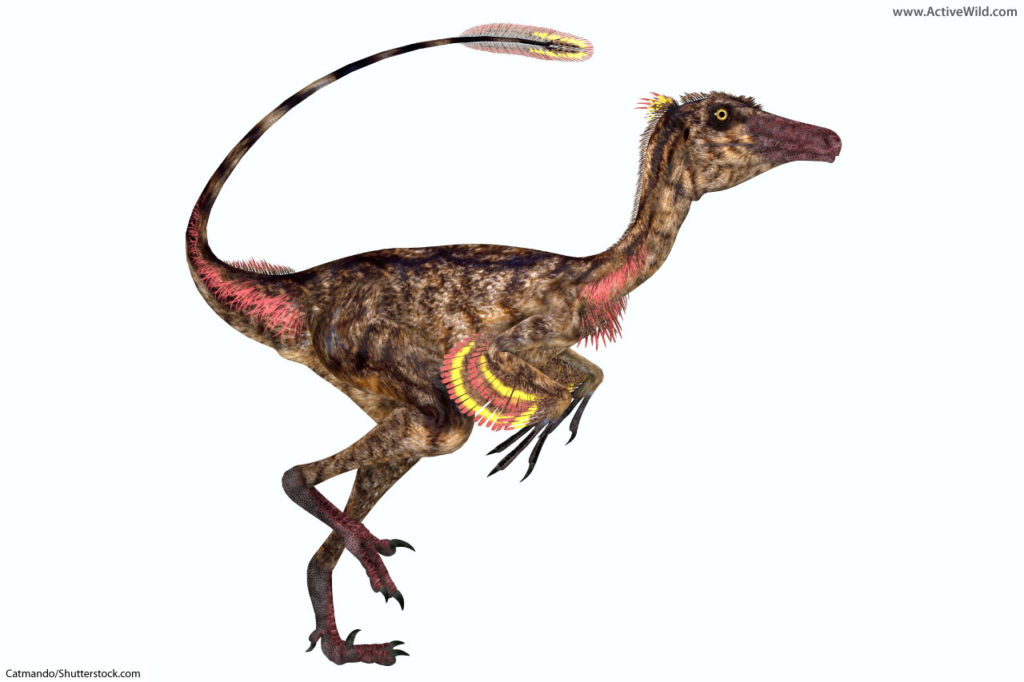


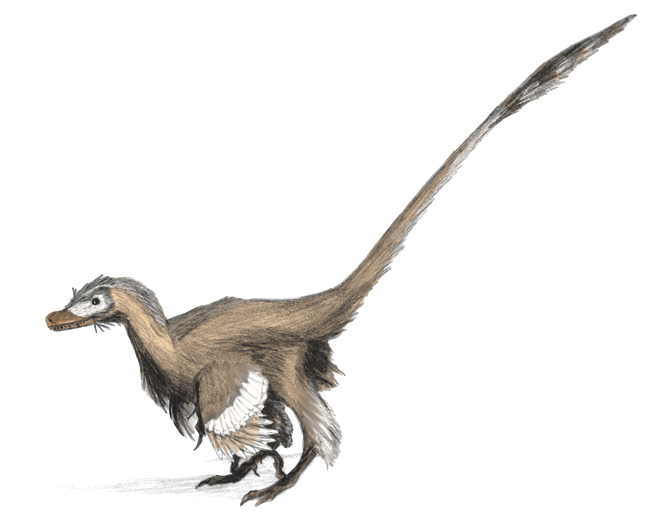
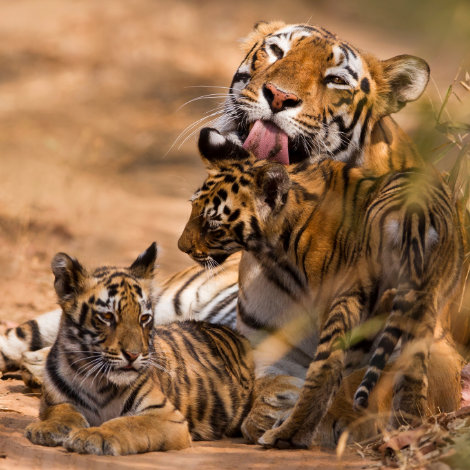
T rexes are big but why small arms
Good question!
The arms of T rex were short but strong, so they may have helped the dinosaur restrain its prey, or helped it to get up from the ground.
You can read more about this on our T rex page: T rex
Regards,
The Active Wild Team
How many cretaceous dinosaurs are there please help
Where’s the Allosaurus?
Hi Alan,
Great question!
As your famous namesake would tell you 😉, Allosaurus lived in the Jurassic Period, millions of years before the dinosaurs on this page!
You can find out more about Allosaurus and other Jurassic dinosaurs on this page: Jurassic Dinosaurs.
Regards,
The Active Wild Team
hey,I wonder why quetzalcoatus is not here
Hi,
Quetzalcoatlus wasn’t a dinosaur – it was a pterosaur! You’ll find lots about Quetzalcoatlus on these pages:
Cretaceous Period Animals That Weren’t Dinosaurs
Pterosaur Facts
List Of Animals That Lived With Dinosaurs
Hey just wondering why the Acrocanthosaurus isn’t on this list?
Good question! We can’t include every dinosaur; there are just too many!
We do add new dinosaurs all the time though, and Acrocanthosaurus is top of our list!
Regards,
The Active Wild Team
what is the difference between Baryonyx and Spinosaurus?
One has a sail on the back and the other doesn’t
Where is deinosuchus?
Hi,
Great question! Deinosuchus wasn’t a dinosaur, it was an early crocodilian. (That’s why it’s not on this page.)
You can find out about Deinosuchus and other amazing animals that shared Earth with the dinosaurs on these pages:
Mesozoic Era Animals List With Pictures & Facts
Cretaceous Period Animals List With Pictures & Facts
Regards,
The Active Wild Team
Where is the sinoceratop! it should be in the list. This is a issue. >:(
Where is sinoceratops? it should be in the list
pleas post water dinos
Hi, there were no actual aquatic dinosaurs. Animals such as plesiosaurs, ichthyosaurs and mosasaurs weren’t dinosaurs, although they lived at the same time as the true dinosaurs.
You can find out more on these pages: Cretaceous Animals and Cretaceous Period Facts.
they probably do
In the picture of the Tarbosaurus there where two dinasours, are they both Tarbosaurus
Hi,
Good question. No, only the dinosaur on the left is a tarbosaurus. The other dino is a Saurolophus, a type of Hadrosaurid, or ‘duck-billed’ dinosaur.
Regards,
The Active Wild Team